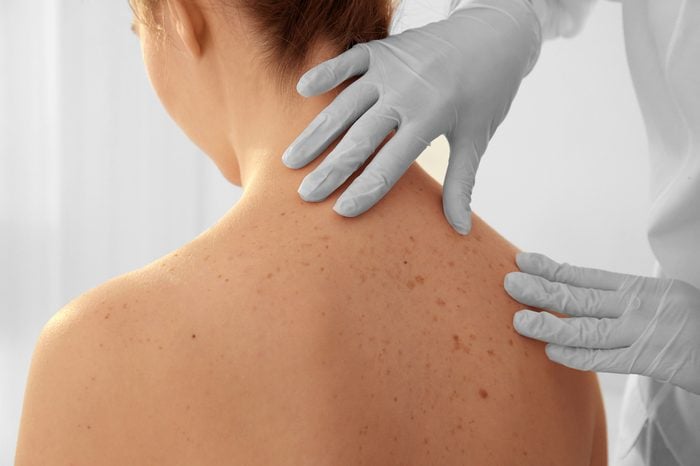
At first, you may mistake a boil for a zit because they’re both red, raised lumps. But there’s one key difference between the two skin lesions: boils are commonly caused by a bacterial infection from Staphylococcus aureus, also known as a staph infection, while pimples occur when oil, dead skin cells, and bacteria clogs your pores, says Anthony M. Rossi, MD, a dermatologist and Mohs surgeon at Memorial Sloan Kettering Cancer Center in New York. Plus, boils are usually firm and painful to the touch, he adds. (Boils aren’t just the only mysterious lumps on your skin—here are the explanations behind these 13 other skin mysteries.)
Staph is a generally harmless bacteria that lives on the skin around the nose, mouth, genitals, and rectum but it can cause an infection once it enters your skin through a cut or other wound, causing a boil to form, he explains. Ingrown hairs on the groin are extremely common sites for boils because the bacteria can infect the hair follicles—small openings in the skin where the hair grows. You’ll often find boils on moist areas of the body like the buttocks, thighs, groin, and armpits.
Since these painful, pus-filled bumps can take up to three weeks to completely heal, here’s how to get rid of a boil efficiently and safely.
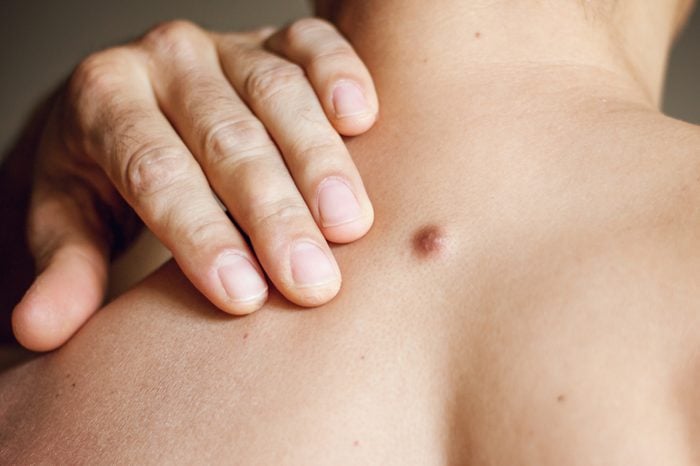
Do not pop, pick, or squeeze
Much like a zit, a boil come to a whitish-yellow head to drain and rid the body of its infectious gunk. But do not give in to the irresistible urge to pick or pop it! “If a boil is going to rupture, let it do it on its own,” says Dr. Rossi. “And don’t squeeze it more because that can push the bacteria in deeper.” These are the other 12 things dermatologists never want you to do to your skin.
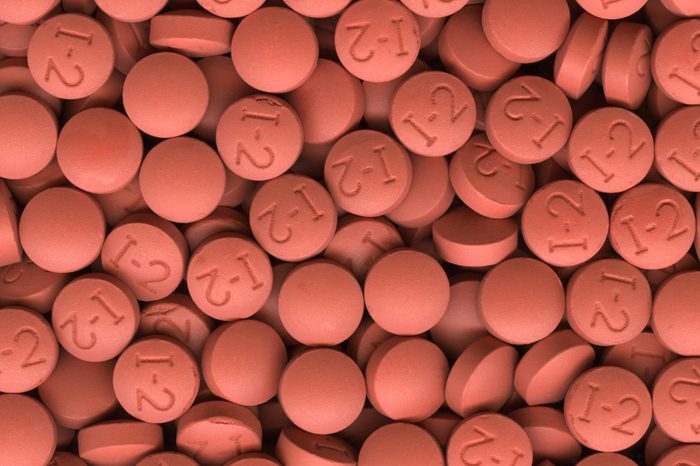
Pop an ibuprofen
Sitting at your desk all day can be a pain in the butt, literally, if your boil is located on your behind. Take a dose of acetaminophen or ibuprofen to quell your pain and suffering until the inflammation goes down, Dr. Rossi says. Here’s the doctor-approved way to remove skin tags.
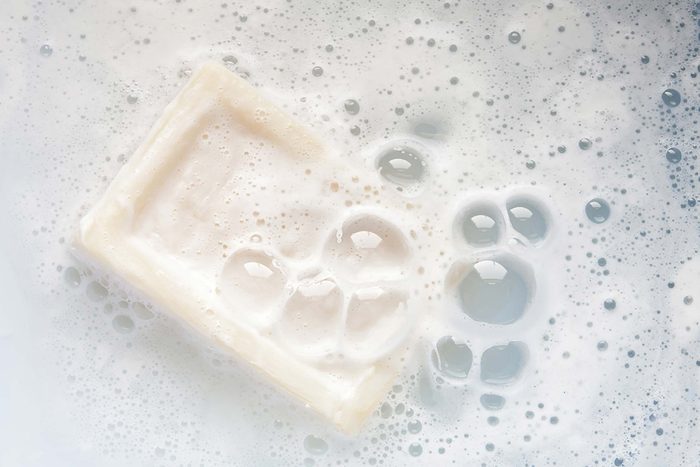
Gently cleanse with warm water and soap
If the boil pops on its own let the boil drain, Dr. Rossi says. Then carefully cleanse the opening with soap and warm water. This is a much gentler alternative for cleaning an open sore compared to using rubbing alcohol, which can sting.
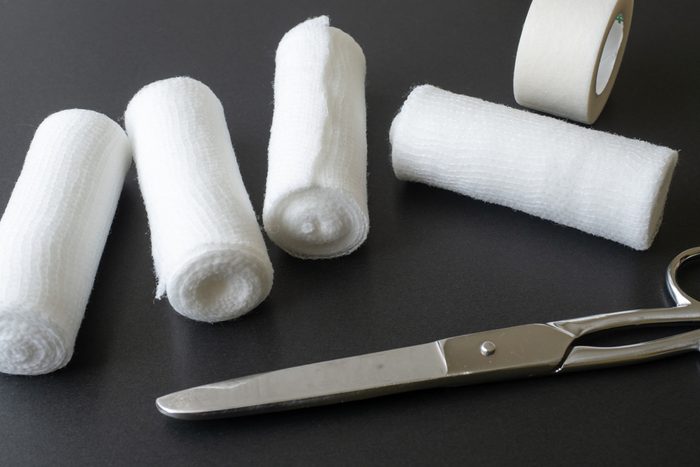
Cover the popped boil with a sterile gauze bandage
Once the sore is cleaned out, cover the boil with a loose gauze bandage to prevent the bacteria from spreading to other parts of the body, Dr. Rossi says. Change the bandage at least once a day until the pus stops draining from the boil. Don’t miss the 37 worst pieces of advice dermatologists have ever heard.
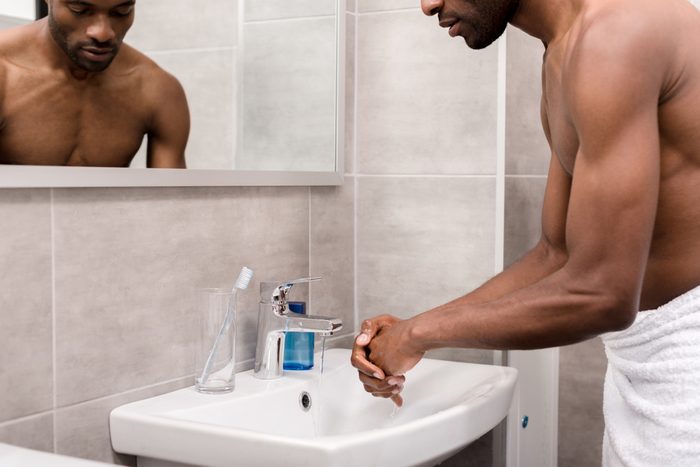
Wash your hands immediately after
As an added measure to ensure the infection doesn’t spread elsewhere on you or to anyone else, wash your hands with soap for at least 20 to 30 seconds after caring for the boil. “It’s really important to not touch it too much because boils carry so much bacteria,” says Dr. Rossi. If soap and water aren’t accessible, carry an alcohol-based hand cleaner in your pocket or purse.
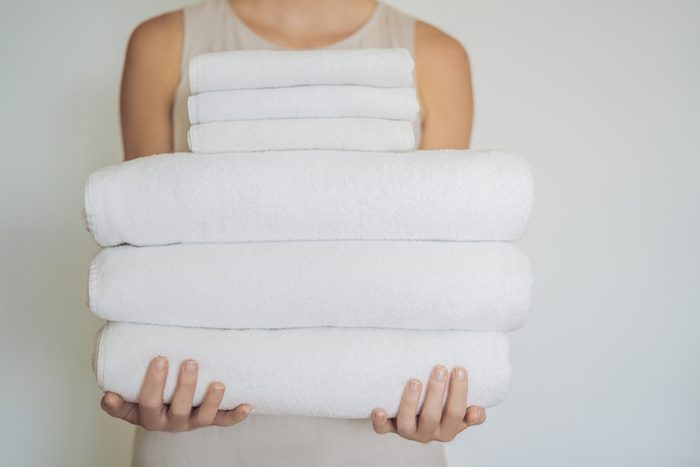
Don’t share anything with your friends or family
Anything that your boil has come into contact with could infect others so it’s best to avoid sharing washcloths, towels, clothing, bath water, and razors with your loved ones until the infection is completely gone, Dr. Rossi cautions. Make sure you stop these 15 everyday habits that are ruining your skin.
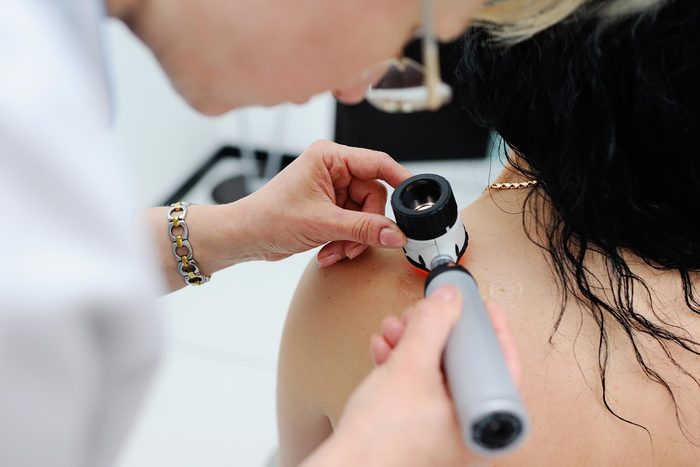
Call your doctor if the boil doesn’t go away
If you haven’t seen any signs of improvement after two weeks, make a trip to your doctor’s office, Dr. Rossi says.
Fortunately, most boils aren’t caused by Methicillin-resistant Staphylococcus aureus (MRSA), a type of staph bacteria that has become resistant to many antibiotics. But if MRSA isn’t treated properly, the infection could quickly turn the boil into a deep, painful abscess that needs to be drained surgically. Even worse, the bacteria could burrow deeper past the skin into the body causing potentially life-threatening infections throughout your body.
Also, keep an eye out for signs of fever, chills, excessive and/or spreading pain, or multiple boils. If these rules for how to get rid of a boil haven’t worked, your healthcare provider may need to prescribe you an antibiotic to fight off the staph infection or drain the abscess with a sterile needle. Next, check out these tricks for how to get rid of a stye.